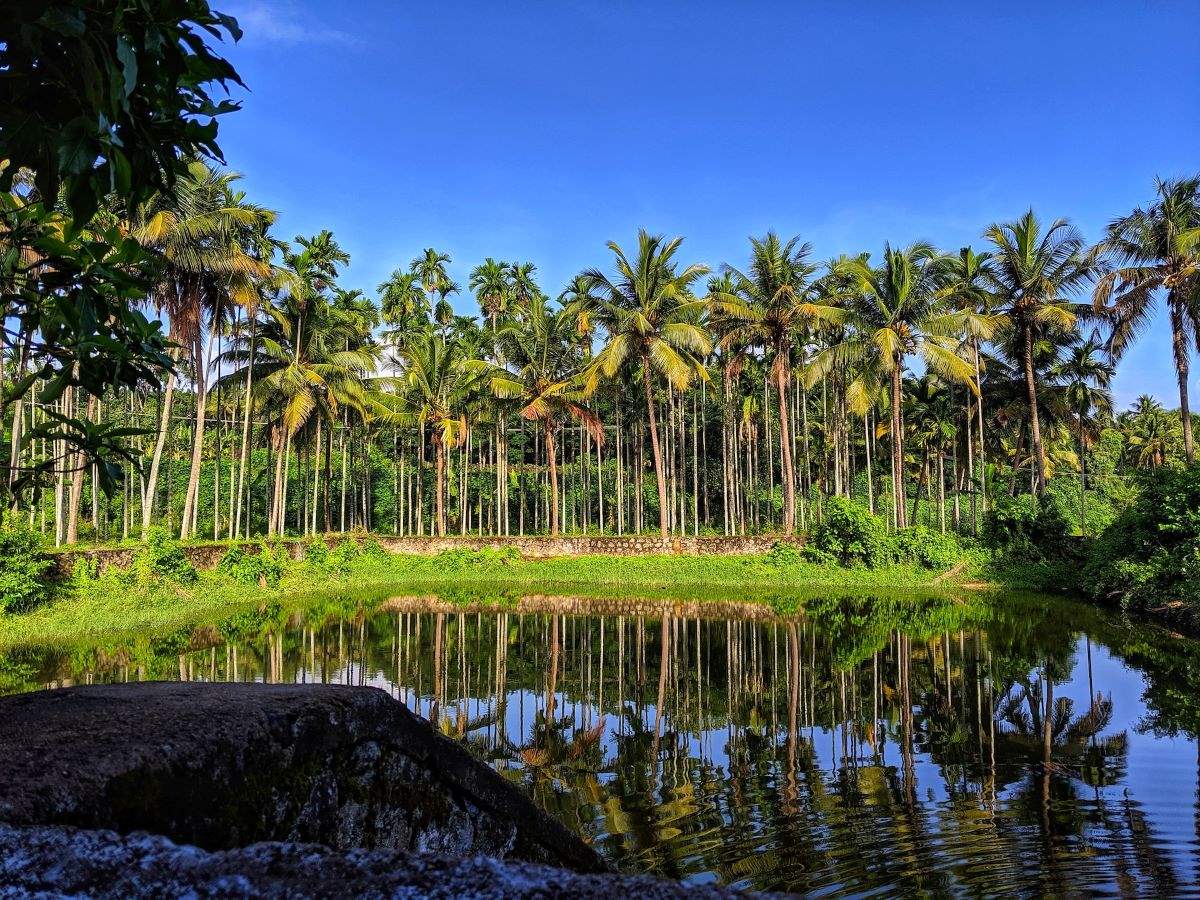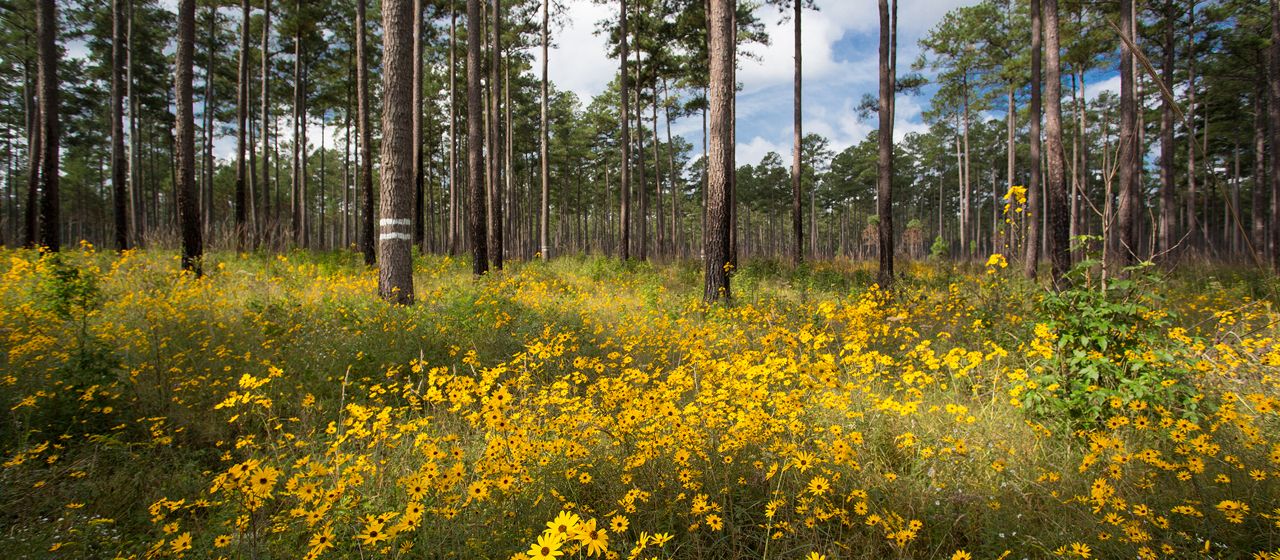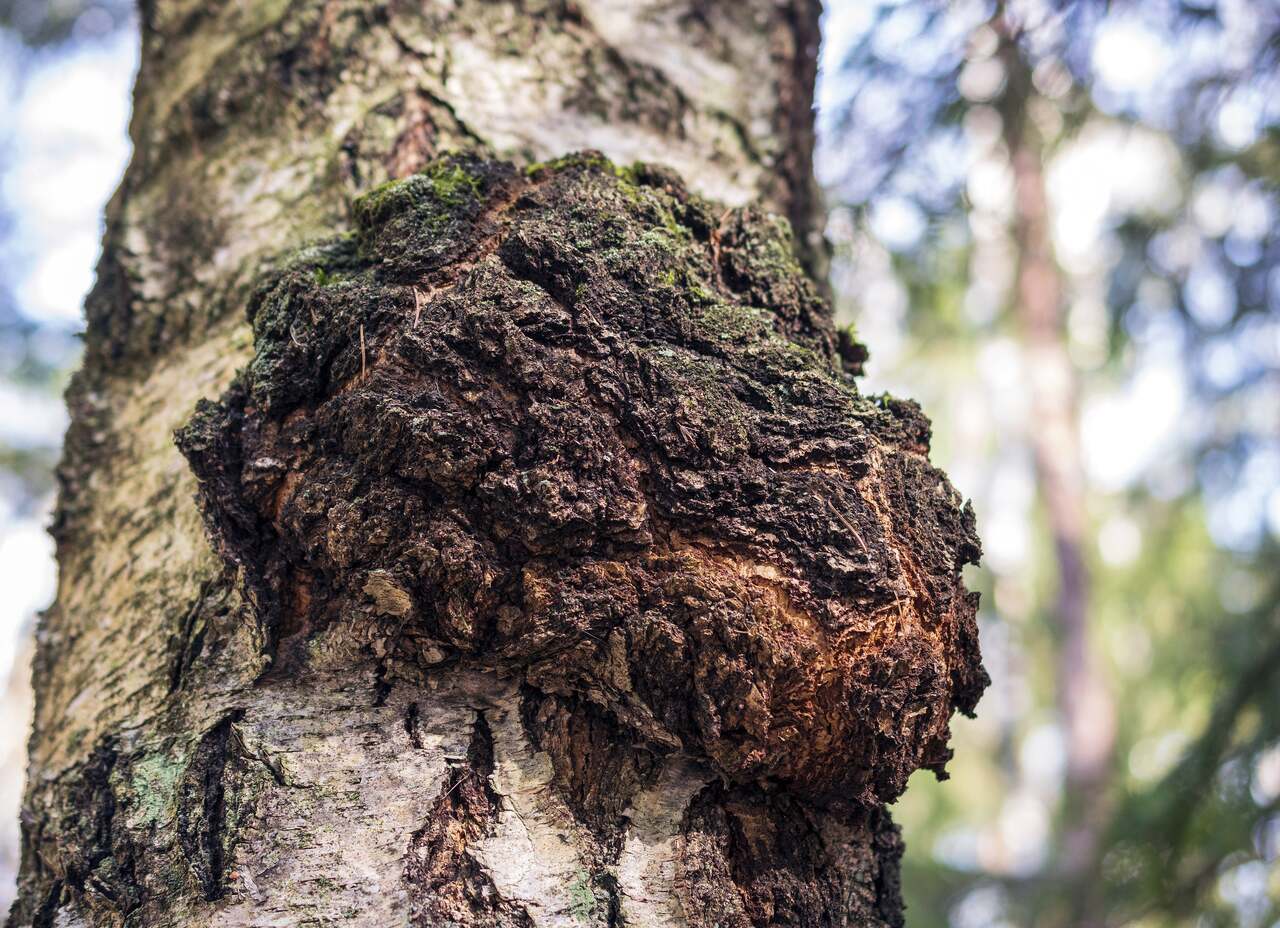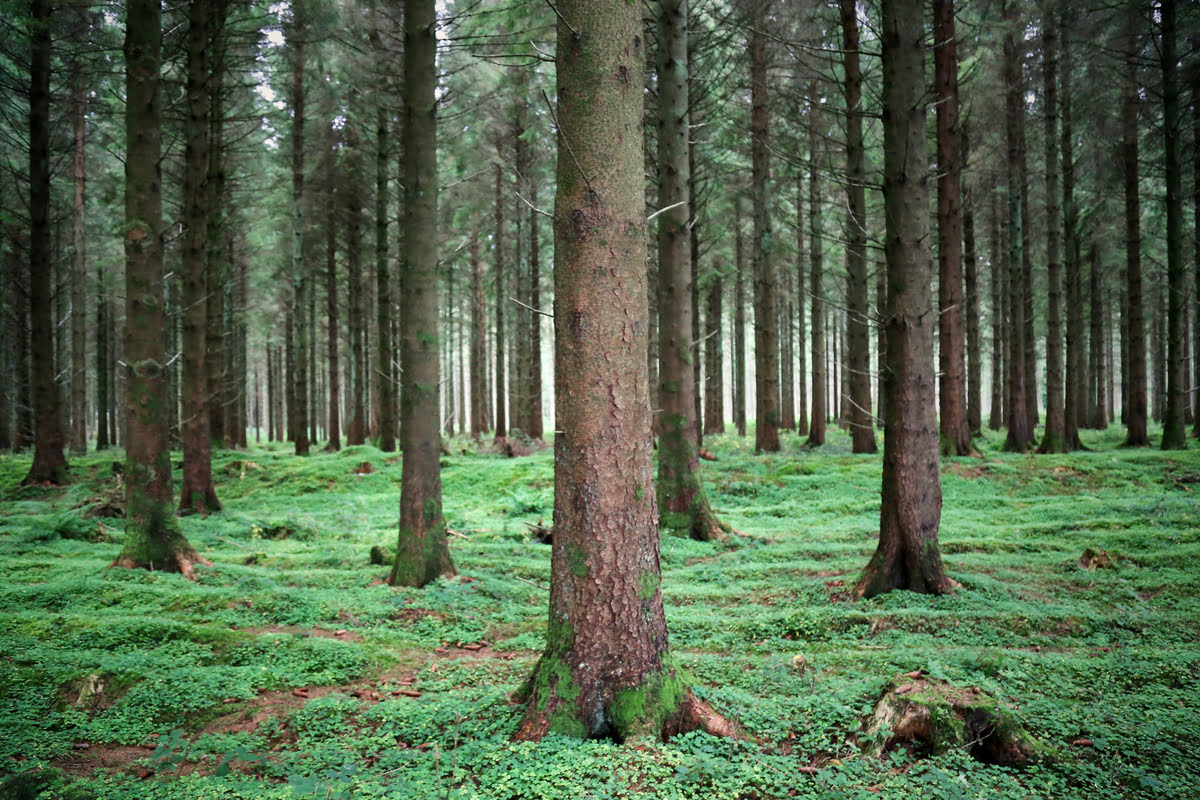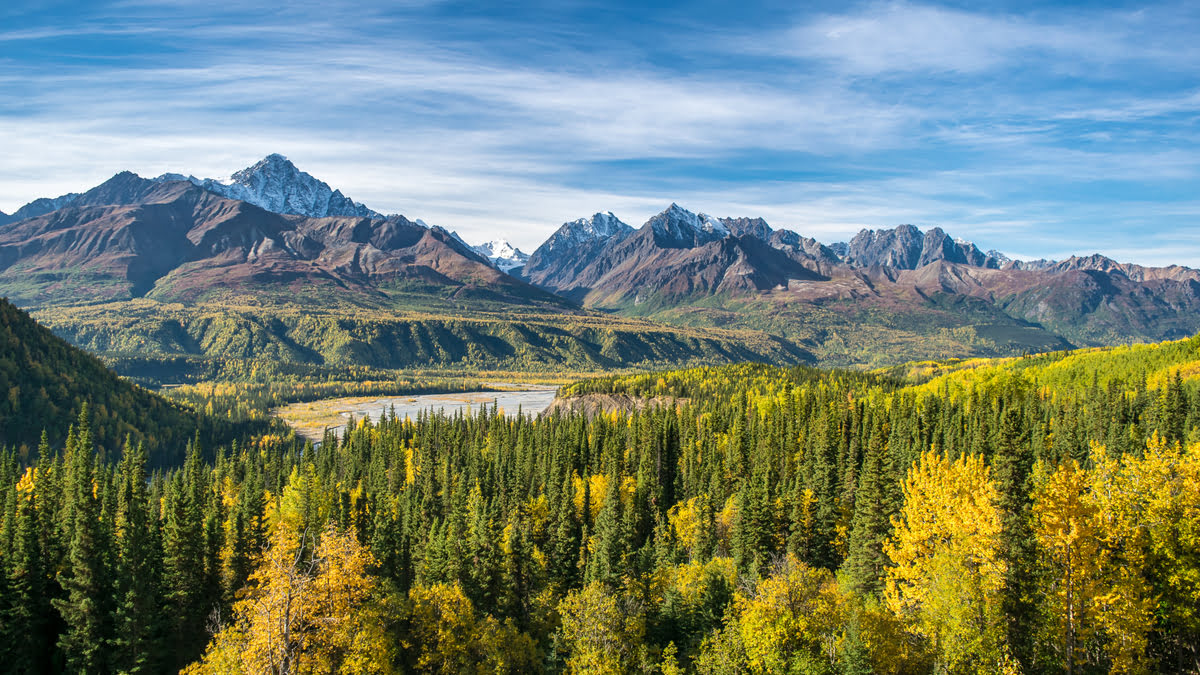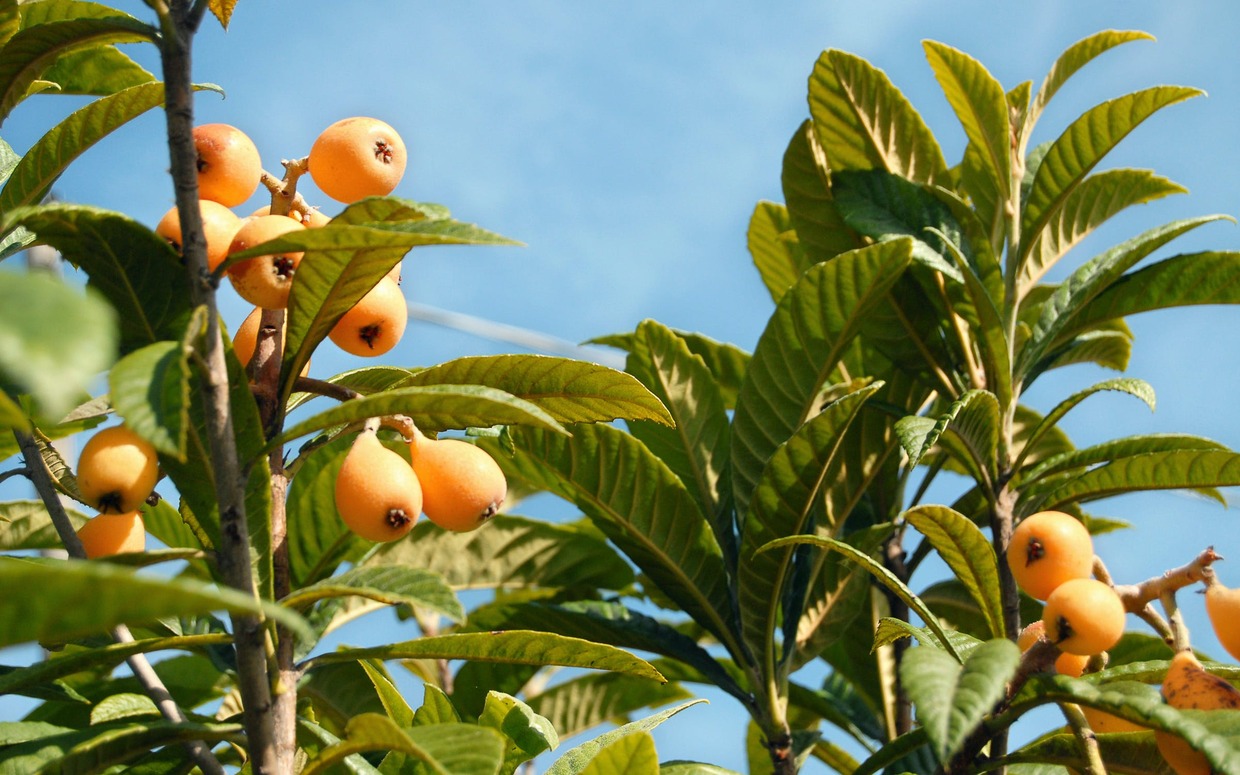Home>Types of Gardening>Ornamental Gardening>What Trees Grow In The Shade
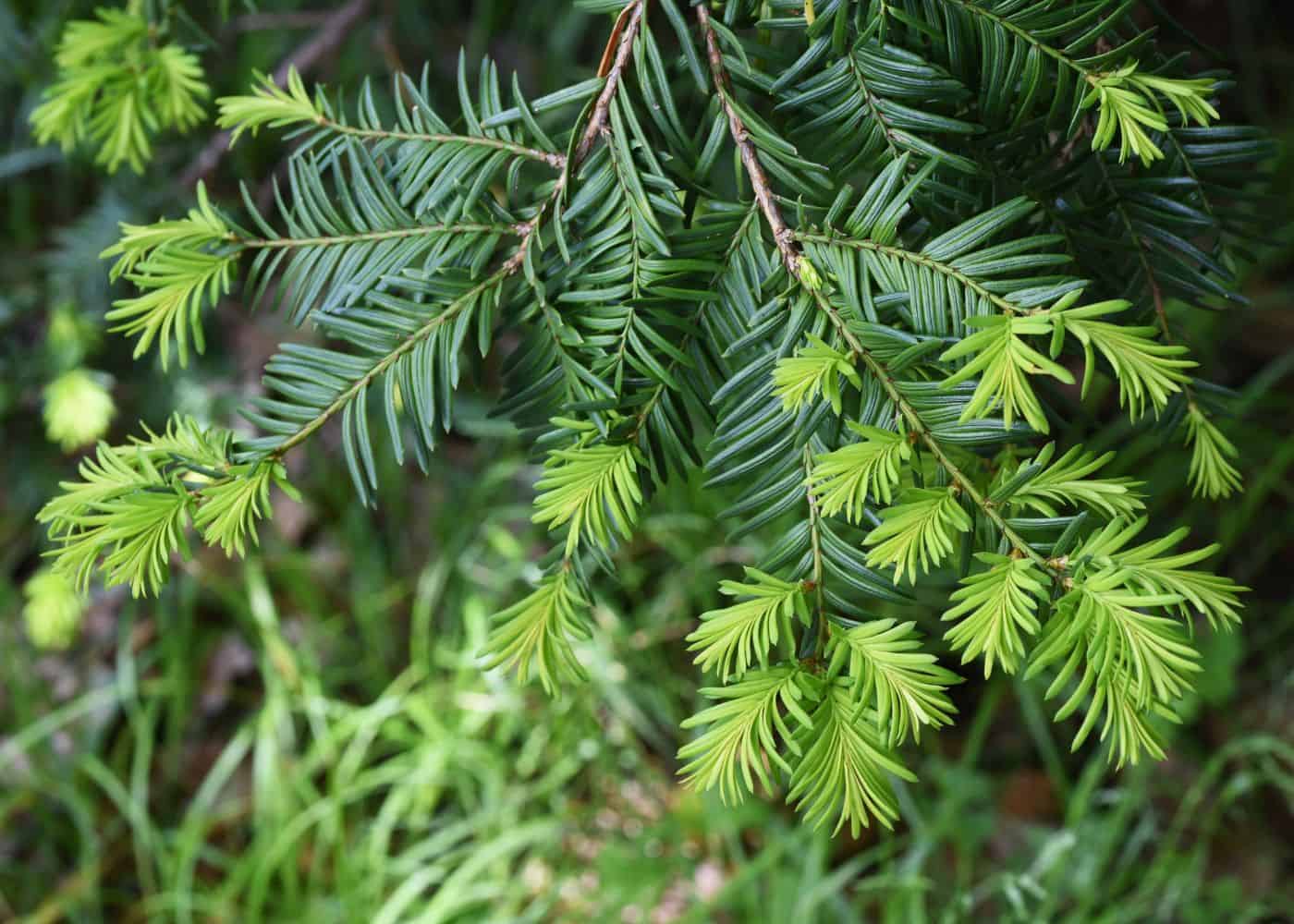

Ornamental Gardening
What Trees Grow In The Shade
Modified: January 22, 2024
Discover the best trees for ornamental gardening in shady areas. Find out which trees thrive in the shade and add beauty to your garden.
(Many of the links in this article redirect to a specific reviewed product. Your purchase of these products through affiliate links helps to generate commission for Chicagolandgardening.com, at no extra cost. Learn more)
Table of Contents
Introduction
Welcome, fellow gardening enthusiasts! Are you in search of the perfect addition to your garden that can thrive in shady areas? Look no further! In this article, we will explore the fascinating world of shade-tolerant trees, which are specially adapted to grow and flourish in areas with limited sunlight.
Shade is a common challenge faced by many gardeners. Whether it’s caused by tall buildings, dense foliage, or overshadowing trees, finding the right plants that can cope with low light conditions can be a daunting task. However, with a little knowledge and careful planning, you can create a lush and vibrant garden even in the shadiest of spots.
Understanding how shade impacts tree growth is crucial when selecting the right species for your garden. Some trees are naturally more adaptable to low light levels, while others may struggle or fail to thrive. Choosing shade-tolerant trees suitable for your specific climate and location ensures a successful garden filled with beautiful foliage and thriving greenery.
In this article, we will explore the factors to consider when choosing shade-tolerant trees, popular trees for various regions, and how to care for these unique specimens in your garden. Additionally, we will provide design tips and recommendations on how to create a picturesque shady landscape that will enchant both you and your guests.
So, if you’re ready to unlock the secrets of ornamental gardening in the shade, let’s dive right in!
Understanding Shade and its Impact on Tree Growth
Shade refers to an area in a garden or landscape where sunlight is limited or blocked entirely. While sunlight is essential for plants’ photosynthesis and overall growth, certain trees have evolved unique adaptations to thrive in shade.
When considering the impact of shade on tree growth, it’s important to understand that not all shade is created equal. There are varying degrees of shade, ranging from partial shade, where sunlight is filtered through foliage, to deep shade, where little to no direct sunlight reaches the ground.
In areas with partial shade, trees can still receive a substantial amount of sunlight, allowing them to carry out photosynthesis and grow relatively well. However, as shade becomes deeper, the availability of sunlight decreases significantly, impacting a tree’s ability to produce energy through photosynthesis. This limitation results in slower growth rates and can even influence the tree’s overall size and shape.
Despite these challenges, certain tree species have adapted to low light conditions. These shade-tolerant trees possess unique characteristics that enable them to thrive even in the dimmest corners of your garden:
- Large Leaves: Shade-tolerant trees often have larger leaves with a greater surface area. This adaptation allows them to capture a greater amount of available sunlight.
- Tolerance to Low Light: Shade-tolerant trees have the ability to convert limited sunlight into energy more efficiently, enabling them to survive and grow in shaded environments.
- Slow Growth: Trees that can tolerate shade often have slower growth rates compared to their counterparts in well-lit areas. This adaptation allows them to allocate resources more efficiently and ensures their survival in low light conditions.
Understanding the impact of shade on tree growth is crucial when selecting shade-tolerant trees for your garden. By choosing trees that have adapted to low light conditions, you can create a beautiful and thriving garden even in areas with limited sunlight.
Factors to Consider When Choosing Shade-Tolerant Trees
When selecting shade-tolerant trees for your garden, several factors must be taken into consideration. By understanding these factors, you can choose the right trees that will not only thrive in shade but also complement the overall aesthetic of your landscape. Here are some key considerations to keep in mind:
Light Requirements: While shade-tolerant trees can grow in low light conditions, it’s important to assess the amount of shade in your garden. Some trees prefer partial shade, while others can tolerate deep shade. Understanding the light requirements of different tree species will help you select the most suitable options for your specific shade conditions.
Climate and Hardiness: Consider the climate and hardiness zone of your location. Some shade-tolerant trees are better suited for colder regions, while others thrive in warmer climates. Researching the ideal climate range for each tree species will ensure their long-term survival and growth in your garden.
Soil Conditions: Different tree species have specific soil preferences. Assess the soil quality, drainage, and pH levels in your garden to determine which trees will thrive in your specific soil conditions. Some shade-tolerant trees are adaptable to a wide range of soil types, while others have more specific soil requirements.
Size and Spacing: Consider the mature size of the trees you are considering and ensure they have enough space to grow. Some shade-tolerant trees can reach significant heights and widths, while others are more compact. Plan for adequate spacing to avoid overcrowding and competition for resources among the trees in your garden.
Environmental Compatibility: Take into account the existing plants, wildlife, and ecosystem in your garden. Choose shade-tolerant trees that are compatible with the surrounding environment and can thrive alongside other plants and wildlife. This will create a balanced and harmonious ecosystem within your garden.
Aesthetics and Garden Design: Lastly, consider the aesthetic appeal of the shade-tolerant trees you choose. Select trees that will enhance the visual appeal of your garden and complement the overall design and style you wish to achieve. Consider factors such as foliage color, texture, and any seasonal features that will add interest and beauty to your landscape.
By considering these factors, you can choose shade-tolerant trees that are well-suited to the specific conditions of your garden and create a stunning and thriving oasis in even the shadiest areas.
Popular Shade-Tolerant Trees for Different Regions
Shade-tolerant trees come in a variety of species, each with its own unique qualities and adaptability to different regions. Below, we explore some popular shade-tolerant trees that thrive in various climate and geographical conditions:
1. Japanese Maple (Acer palmatum): Known for its stunning foliage and graceful form, the Japanese Maple is a popular choice for shade-tolerant trees. It thrives in partial shade and is best suited for temperate climates.
2. American Beech (Fagus grandifolia): Native to eastern North America, the American Beech is an impressive shade tree that tolerates deep shade. It features smooth gray bark and provides excellent shade with its thick canopy.
3. Dogwood (Cornus spp.): Dogwood trees are admired for their beautiful spring blossoms and vibrant fall foliage. They generally prefer partial shade and are adaptable to a wide range of climates.
4. Eastern Hemlock (Tsuga canadensis): The Eastern Hemlock is a majestic evergreen tree that thrives in deep shade and cool, moist environments. It serves as an excellent screen or backdrop in shady landscapes.
5. Southern Magnolia (Magnolia grandiflora): Native to the southeastern United States, the Southern Magnolia is a shade-tolerant tree that blooms with large, fragrant flowers. It thrives in partial shade and is well-suited for warmer regions.
6. Serviceberry (Amelanchier spp.): Serviceberry trees, also known as Juneberry or Shadblow, are deciduous trees that adapt well to shade. They produce white flowers in spring and colorful berries loved by birds.
7. River Birch (Betula nigra): The River Birch is prized for its attractive peeling bark and can tolerate both full sun and partial shade. It adapts well to various soil types and is perfect for wet or poorly drained areas.
8. Yew (Taxus spp.): Yews are evergreen trees that can thrive in full shade. With their dense foliage and tolerance to shearing, they make excellent hedging or screening plants.
9. Katsura Tree (Cercidiphyllum japonicum): The Katsura Tree is known for its unique heart-shaped leaves and captivating sweet fragrance. It prefers partial shade and is well-suited for regions with mild to moderate climates.
10. Redbud (Cercis spp.): Redbud trees are admired for their cheerful pink or purple spring blossoms. They adapt well to partial shade and are ideal for adding color and interest to shady areas.
Remember to consult with local nurseries or gardening experts to determine the best shade-tolerant tree species for your specific region. By choosing trees that are well-adapted to your climate and growing conditions, you can ensure their successful establishment and long-term health in your garden.
How to Care for Shade-Tolerant Trees
Once you’ve selected and planted shade-tolerant trees in your garden, it’s important to provide them with the proper care and attention to ensure their healthy growth and longevity. Here are some essential tips for caring for shade-tolerant trees:
1. Watering: Adequate hydration is crucial for young shade-tolerant trees, especially during the first few years of establishment. Water deeply and regularly, ensuring the soil stays evenly moist but not waterlogged. Monitor rainfall and adjust your watering schedule accordingly.
2. Mulching: Apply a layer of organic mulch around the base of your shade-tolerant trees to help retain moisture, regulate soil temperature, and suppress weeds. It’s best to maintain a mulch layer that is a few inches thick, leaving space around the trunk to prevent rot.
3. Fertilizing: While shade-tolerant trees are generally less demanding in terms of nutrients, they still benefit from occasional fertilization. Apply a balanced slow-release fertilizer in early spring to provide necessary nutrients for healthy growth. Read the package instructions and follow appropriate dosage recommendations.
4. Pruning: Regular pruning helps maintain the shape, structure, and health of shade-tolerant trees. Remove any dead, damaged, or crossing branches, and thin out the canopy to improve airflow and light penetration. Prune during the dormant season to minimize stress on the tree.
5. Pest and Disease Management: Monitor your shade-tolerant trees for common pests and diseases, such as aphids, caterpillars, or fungal infections. Take prompt action if you notice any signs of infestation or disease, using appropriate organic or chemical treatments as necessary.
6. Proper Care During Extreme Weather: Protect your shade-tolerant trees during extreme weather conditions. Provide shade cloth or temporary structures to shield them from excessive sun exposure or protect them from harsh winds and heavy snowfall. Proper care during extreme weather can prevent stress and damage to the trees.
7. Regular Inspection: Regularly inspect your shade-tolerant trees for any signs of stress, such as wilting leaves, discoloration, or abnormal growth patterns. Early detection of issues allows for timely intervention and prevents further damage to the trees.
8. Annual Checkup: Consider scheduling an annual checkup with an arborist or tree care professional. They can assess the overall health of your shade-tolerant trees, identify any potential problems, and provide recommendations for care and maintenance.
Remember that while shade-tolerant trees are adapted to low light conditions, they still require proper care and attention. By providing adequate moisture, nutrition, and regular maintenance, you can ensure the health and vitality of your shade-tolerant trees, creating a lush and thriving garden in shaded areas.
Creating a Shady Landscape: Design Tips and Recommendations
Designing a shady landscape requires careful consideration to maximize the beauty and functionality of your garden. Follow these tips and recommendations to create a stunning and inviting outdoor space:
1. Layering: Utilize the concept of layering to create depth and visual interest in your shady landscape. Plant taller shade-tolerant trees at the back or sides of your garden, followed by shorter trees and shrubs in the middle, and finally, groundcovers and low-growing plants at the front.
2. Texture and Contrast: Incorporate a variety of foliage textures and colors to add dimension to your shady landscape. Pair plants with different leaf shapes, sizes, and textures to create eye-catching contrasts. Consider using plants with variegated foliage or plants that offer unique textures like fine ferns or broad hosta leaves.
3. Seasonal Interest: Choose shade-tolerant trees and plants that offer seasonal interest throughout the year. Select trees with beautiful spring blossoms, foliage that changes color in the fall, or plants that bear colorful berries or flowers during the summer months. This ensures that your shady garden remains vibrant and alluring throughout the seasons.
4. Focal Points: Incorporate focal points to draw attention and create a sense of visual flow in your shady landscape. This can be achieved through the addition of a statement tree, a garden sculpture, a water feature, or a seating area placed strategically to create a focal point within the shade.
5. Softscape and Hardscape Balance: Achieve a harmonious balance between plants (softscape) and non-living elements (hardscape) in your shady landscape. Incorporate features such as pathways, pergolas, or seating areas made from materials like stone or wood to create structure and define different areas within your garden.
6. Understory Plantings: Take advantage of the shade by incorporating lush understory plantings. Shade-tolerant perennials such as hostas, ferns, and astilbes thrive in the dappled shade provided by trees. These plants not only add visual interest but also help to suppress weeds and create a cohesive and layered look in your shady landscape.
7. Play with Lighting: Embrace the unique lighting conditions in your shady garden by incorporating subtle and strategic lighting. Highlight pathways, focal points, or selected trees with low-voltage outdoor lighting to create a magical ambiance in the evenings, extending the enjoyment of your garden beyond daylight hours.
8. Natural Elements: Integrate natural elements to create a tranquil and organic atmosphere in your shady landscape. Incorporate elements like a moss-covered rock wall, a small pond or birdbath, or strategically placed boulders to add a touch of tranquility and emphasize the natural beauty of your garden.
By implementing these design tips and recommendations, you can transform your shady landscape into a captivating and inviting space, showcasing the beauty and potential of shade-tolerant trees and plants.
Conclusion
Creating a thriving and beautiful garden in shady areas may present its challenges, but with the right knowledge and careful planning, you can transform even the darkest corners of your outdoor space into captivating and lush landscapes. Shade-tolerant trees are the key to unlocking the potential of these areas, providing shade, texture, and visual interest to your garden.
Understanding the impact of shade on tree growth, considering factors such as light requirements, climate suitability, and soil conditions, will enable you to select the most suitable shade-tolerant trees for your specific garden. Whether you’re looking for striking foliage, vibrant blooms, or a variety of textures, there are shade-tolerant tree species to suit every taste and aesthetic.
Proper care and maintenance are crucial for the health and longevity of shade-tolerant trees. Providing adequate watering, mulching, and regular inspection for pests and diseases will ensure their continued growth and beauty. By following these care guidelines, your shade-tolerant trees will continue to thrive and enhance your garden year after year.
When designing your shady landscape, remember to incorporate elements of layering, texture, and contrast to create depth and visual interest. Adding focal points, striking hardscape features, and selecting plants with seasonal interest will further enhance the beauty of your shaded garden. Embrace the unique lighting conditions and blend natural elements to create a tranquil and inviting ambiance.
Now that you have a deeper understanding of shade-tolerant trees and how to care for them, it’s time to embark on your gardening journey. With the right selection, care, and design, you can transform your shady areas into enchanting and vibrant outdoor spaces that will be the envy of all who visit.

